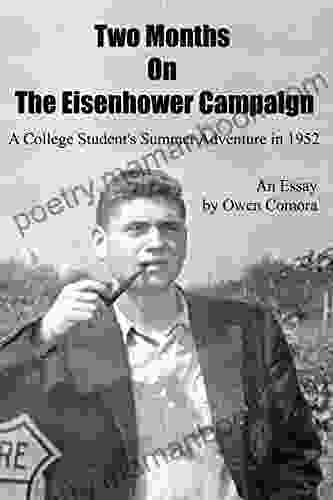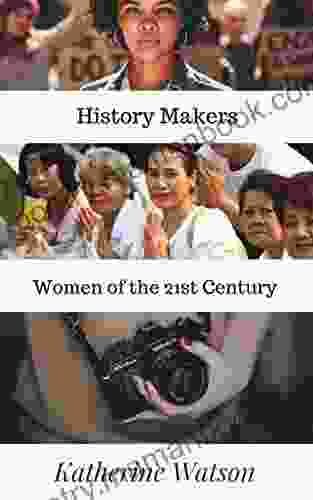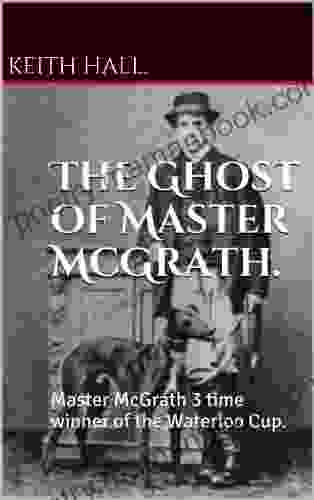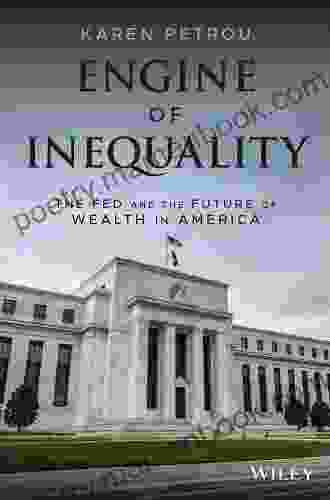Two Months on the Eisenhower Campaign: A Detailed Account of the Historic Presidential Race

In the annals of American political history, the 1952 presidential election stands out as a watershed moment. The Republican Party, after two decades of Democratic dominance, nominated Dwight D. Eisenhower, the revered military commander who had led the Allied forces to victory in World War II. Eisenhower's campaign, spanning just two months, was a whirlwind of political maneuvering, strategic planning, and personal encounters that ultimately culminated in a resounding victory.
5 out of 5
| Language | : | English |
| File size | : | 454 KB |
| Text-to-Speech | : | Enabled |
| Screen Reader | : | Supported |
| Enhanced typesetting | : | Enabled |
| Word Wise | : | Enabled |
| Print length | : | 18 pages |
| Lending | : | Enabled |
The Republican Convention and Eisenhower's Candidacy
The Republican National Convention, held in Chicago in July 1952, was a highly anticipated event. Eisenhower was the clear frontrunner, but he faced challenges from several other candidates, including Senator Robert Taft of Ohio and Governor Earl Warren of California. Despite these challenges, Eisenhower's popularity and military credentials proved irresistible, and he secured the nomination on the first ballot.
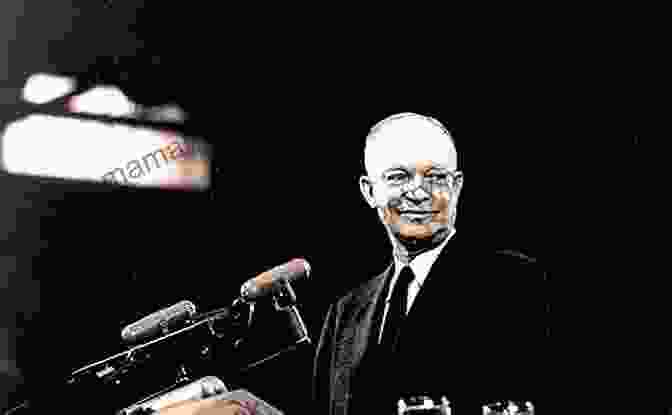
The Campaign Trail: Eisenhower's Cross-Country Odyssey
With the nomination secured, Eisenhower embarked on a two-month campaign that took him across the country. He traveled over 50,000 miles by train, plane, and automobile, delivering speeches, holding rallies, and meeting with voters. His campaign focused on three main themes: the need for a change from the Truman administration, the importance of restoring fiscal responsibility, and the urgency of ending the Korean War.
Eisenhower's campaign was characterized by his personal charisma and ability to connect with voters. He projected an image of experience, competence, and leadership, contrasting sharply with his opponent, Adlai Stevenson, the Democratic nominee who was seen as more intellectual and detached.
Key Strategies and Political Maneuvers
Behind the scenes, the Eisenhower campaign team employed several key strategies to maximize their chances of victory. One strategy was to avoid personal attacks on Stevenson and instead focus on positive messaging and promises for the future. This approach helped to maintain a favorable public image and avoid alienating voters.
Another strategy was to carefully craft Eisenhower's speeches and public appearances to appeal to the widest possible audience. His speeches were typically moderate in tone, avoiding extreme positions that could alienate swing voters. Additionally, the campaign utilized modern advertising techniques and public relations to effectively convey their message to the public.
The Impact of the Korean War
One of the most significant factors influencing the 1952 election was the ongoing Korean War. Eisenhower's military experience and promise to end the conflict resonated with voters who were weary of the war and its heavy toll on American lives and resources.
Eisenhower's campaign capitalized on this public sentiment by emphasizing his belief that a negotiated settlement could be reached, without sacrificing American principles or security interests. His position contrasted with Stevenson's more cautious approach, which prioritized the preservation of the United Nations mandate in Korea.
The Final Stretch and the Electoral Victory
As the campaign entered its final weeks, Eisenhower's lead in the polls widened. He maintained a relentless schedule of rallies and speeches, while Stevenson struggled to gain traction. On Election Day, November 4, 1952, Eisenhower won a landslide victory, securing 442 electoral votes to Stevenson's 89.
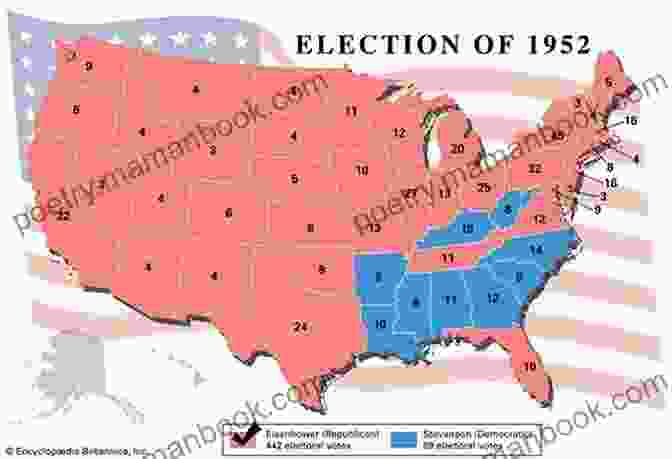
Eisenhower's Personal Experiences on the Campaign Trail
Throughout the two-month campaign, Eisenhower encountered a wide range of experiences that shaped his perceptions and left a lasting impression on him.
One memorable event was a train stop in Abilene, Kansas, Eisenhower's hometown. As the train pulled into the station, a crowd of cheering supporters greeted him with a homemade banner that read "Welcome Home, General Ike." The sight of his humble beginnings and the warmth of his reception moved Eisenhower deeply and reminded him of the values and ideals that had guided his life.
Another significant experience was a campaign stop in Los Angeles. Eisenhower visited a local hospital where he met with wounded veterans who had served under his command during World War II. These encounters reminded him of the sacrifices made by those who fought for their country and reinforced his desire to end the Korean War.
The Legacy of the Eisenhower Campaign
The 1952 Eisenhower campaign was a turning point in American politics. It marked the end of the Democratic Party's dominance and ushered in an era of Republican ascendancy that would last for decades. Eisenhower's victory was a testament to his personal popularity, his military credentials, and his ability to connect with the American people.
The campaign also had a significant impact on the conduct of future presidential campaigns. Eisenhower's use of modern advertising, public relations, and strategic messaging set a new standard for political campaigning and continues to influence political campaigns today.
Dwight D. Eisenhower's two-month campaign for the 1952 presidential election was a masterclass in political strategy and personal charisma. His ability to appeal to a broad spectrum of voters, his focus on positive messaging, and his unwavering commitment to ending the Korean War ultimately led to a resounding victory. The legacy of the Eisenhower campaign continues to shape American politics and serves as an inspiring example of how a well-run campaign can bring about meaningful change for the nation.
5 out of 5
| Language | : | English |
| File size | : | 454 KB |
| Text-to-Speech | : | Enabled |
| Screen Reader | : | Supported |
| Enhanced typesetting | : | Enabled |
| Word Wise | : | Enabled |
| Print length | : | 18 pages |
| Lending | : | Enabled |
Do you want to contribute by writing guest posts on this blog?
Please contact us and send us a resume of previous articles that you have written.
 Top Book
Top Book Novel
Novel Fiction
Fiction Nonfiction
Nonfiction Literature
Literature Paperback
Paperback Hardcover
Hardcover E-book
E-book Audiobook
Audiobook Bestseller
Bestseller Classic
Classic Mystery
Mystery Thriller
Thriller Romance
Romance Fantasy
Fantasy Science Fiction
Science Fiction Biography
Biography Memoir
Memoir Autobiography
Autobiography Poetry
Poetry Drama
Drama Historical Fiction
Historical Fiction Self-help
Self-help Young Adult
Young Adult Childrens Books
Childrens Books Graphic Novel
Graphic Novel Anthology
Anthology Series
Series Encyclopedia
Encyclopedia Reference
Reference Guidebook
Guidebook Textbook
Textbook Workbook
Workbook Journal
Journal Diary
Diary Manuscript
Manuscript Folio
Folio Pulp Fiction
Pulp Fiction Short Stories
Short Stories Fairy Tales
Fairy Tales Fables
Fables Mythology
Mythology Philosophy
Philosophy Religion
Religion Spirituality
Spirituality Essays
Essays Critique
Critique Commentary
Commentary Glossary
Glossary Bibliography
Bibliography Index
Index Table of Contents
Table of Contents Preface
Preface Introduction
Introduction Foreword
Foreword Afterword
Afterword Appendices
Appendices Annotations
Annotations Footnotes
Footnotes Epilogue
Epilogue Prologue
Prologue Cindy Kirk
Cindy Kirk Katie Rodante
Katie Rodante Bob Tarte
Bob Tarte Lewis Pinault
Lewis Pinault John Stevens
John Stevens Aeschylus
Aeschylus Mark Allen Atterson
Mark Allen Atterson Felice Vinci
Felice Vinci Neil Astley
Neil Astley Paula Jacobsen
Paula Jacobsen David Clow
David Clow Ke Yang
Ke Yang Emthy A
Emthy A Heather Hildenbrand
Heather Hildenbrand Knute Skinner
Knute Skinner Frank J Lechner
Frank J Lechner Delphia
Delphia Jd Hart
Jd Hart Arin Murphy Hiscock
Arin Murphy Hiscock Lucinda Segneri
Lucinda Segneri
Light bulbAdvertise smarter! Our strategic ad space ensures maximum exposure. Reserve your spot today!
 Israel BellFollow ·19.7k
Israel BellFollow ·19.7k Harvey BellFollow ·11.8k
Harvey BellFollow ·11.8k William WordsworthFollow ·8.7k
William WordsworthFollow ·8.7k Haruki MurakamiFollow ·18.1k
Haruki MurakamiFollow ·18.1k Samuel BeckettFollow ·6.8k
Samuel BeckettFollow ·6.8k Michael CrichtonFollow ·18k
Michael CrichtonFollow ·18k Colt SimmonsFollow ·2.2k
Colt SimmonsFollow ·2.2k Fabian MitchellFollow ·13.1k
Fabian MitchellFollow ·13.1k

 Patrick Hayes
Patrick HayesDeath on Stage: Euphemia Martins Mystery 16
Synopsis In the...

 Benji Powell
Benji Powell1001 Best Baking Recipes Of All Time
Baking is a fun and...
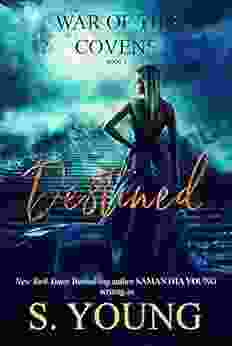
 Terry Bell
Terry BellDestined War of the Covens: A Supernatural Saga of Power,...
Welcome to the...
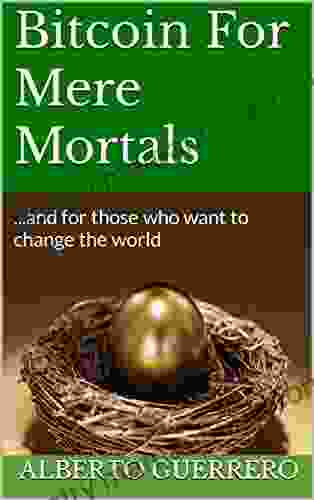
 Mark Twain
Mark TwainBitcoin For Mere Mortals: A Comprehensive Guide for...
Bitcoin is a...

 Dennis Hayes
Dennis HayesThe Best Budget Gaming PC 2024: Build the Ultimate Gaming...
Are you looking to build the best budget...
5 out of 5
| Language | : | English |
| File size | : | 454 KB |
| Text-to-Speech | : | Enabled |
| Screen Reader | : | Supported |
| Enhanced typesetting | : | Enabled |
| Word Wise | : | Enabled |
| Print length | : | 18 pages |
| Lending | : | Enabled |


